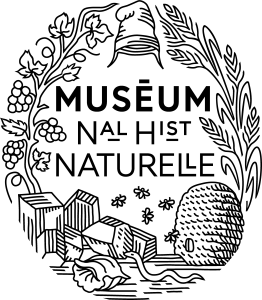
Vercors, Vie Sauvage © Sarah Roubato
On November 27th, 2019, a French organisation called Association pour la Protection des Animaux Sauvage (ASPAS) created a 490-hectare wildlife reserve in the Vercors mountain range. Becoming owners, thanks to thousands of private donations, the organization wishes to create a natural space of non-management or “free” nature. Their goals are to reconstitute islands of intact nature for the fauna and vegetation and to act against the global decline of biodiversity at a local scale. Indeed, biodiversity is declining in rates unprecedented in human history with, according to the Intergovernmental Science-Policy Platform on Biodiversity and Ecosystem Services (IPBES), one million animal and plant species now threatened with extinction.
Humans have partially recognized their part of responsibility with regards to the decline of biodiversity, but the ways to protect nature from further damage are disputed. Do we need to protect it from human impact or manage it? Ecologists have gathered information on how species and ecosystems function and this knowledge could be used to help manage nature. However, this implementation of human judgement and knowledge on nature is controversial.
The rose-ringed parakeet is a parrot native to Africa and South Asia, which was brought to Europe in the mid-20th century. Today, it is considered a feral bird and even an invasive species in some countries. Invasive species are species that are “not native to a specific location, and that have a tendency to spread to a degree believed to cause damage to the environment, human economy, or human health” (Ehrenfeld, 2010). Development and globalization of human flows have accelerated the geographical displacements of flora and fauna leading to the distinction between native and exotic species. Exotic species are described as species that occur in areas outside of their natural geographic range, this qualification is often based on the arbitrary criteria of temporality (recent) and intention (introduced or accidental). For example, the Horse Chestnut was introduced in France at the beginning of the 16th century from Greece but it is now considered an autochthon species.
Exotic species may become invasive species when their proliferation threatens other native species, such as in New Zealand where rats, stoats, and possums threaten unique endemic wildlife. For proponents of a managed nature, this nomination classifies them as “bad” species that need to be exterminated to restore and protect the existing ecosystem. But somehow, nature has always shown an ability to find its way and to adapt when facing perturbations. This ability is called resilience, which is “the capacity of a system to absorb disturbance and reorganize while undergoing change so as to still retain essentially the same function, structure, identity, and feedbacks” (Walker et al., 2004). Managing nature tends to restore or perpetuate a given state chosen according to the qualities sought by human society. What flexibility would then be left to ecosystems to renew themselves and evolve towards new forms of life?
Furthermore, the legitimacy of human judgment to decide whether or not a species has the right to proliferate can be questioned, especially after being introduced by humans themselves. Nature does not choose what is good or bad; human judgement does.
This article was written by Marguerite Ollivon, Mariem El Harrak, Raoul Daubresse, and Tristan Macadre all Master’s student in the Muséum “Society & Biodiversity”specialization.
Bibliography:
Blandin, P., 2009, De la protection de la nature au pilotage de la biodiversité, Versailles, Quae.
Ehrenfeld, J. G. (2010). “Ecosystem consequences of biological invasions”. Annual review of ecology, evolution, and systematics, 41, 59-80.
Larrère, R. (2005). Quelle(s) éthique(s) pour la nature ?. Natures Sciences Sociétés, vol. 13(2), 194-197.
Maxwell, S. L., Fuller, R. A., Brooks, T. M., Watson, J. E., (2016), Biodiversity: The ravages of guns, nets and bulldozers, Nature, vol. 536(7616), pp. 143-145.
Piermont, L. (2005). Gérer la Nature. Natures Sciences Sociétés, vol. 13(1), 62-67.
Walker, B.; Holling, C. S.; Carpenter, S. R.; Kinzig, A. (2004). “Resilience, adaptability and transformability in social–ecological systems”. Ecology and Society. 9 (2).
